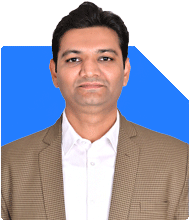Is my SBI Magnum Children's Benefit Fund investment better than gold?
Ramalingam Kalirajan |8317 Answers |Ask -Follow
Mutual Funds, Financial Planning Expert - Answered on Apr 22, 2025
He has an MBA in finance from the University of Madras and is a certified financial planner.
He is the director and chief financial planner at Holistic Investment, a Chennai-based firm that offers financial planning and wealth management advice.... more

Hello sir. I have invested Rs.1.00 lac in SBI Magnum Children's Benefit Fund- Investment Plan- Direct Plan - Growth. Actually I was planning to invest this amount in gold. However, after an intense inquiry and research from the Internet I decided to invest in SbI plan. Please let me know whether I did the best thing not opting for gold investment and investing in SBI Plan.
Let’s now evaluate your decision with a 360-degree view.
Why Choosing Mutual Funds Over Gold Can Be a Wise Decision
Gold is often used for preserving wealth, not creating it.
Over the long term, gold gives moderate returns.
Gold does not produce income or dividends.
It only grows based on price appreciation.
Mutual funds, especially equity-based ones, are better wealth creators.
They compound your money with professional fund management.
Equity funds outperform gold over long durations like 10–15 years.
Mutual funds are more aligned with long-term goals like child’s education or marriage.
Equity funds, though volatile in the short term, deliver better inflation-beating returns.
So yes, not choosing gold and opting for a fund is a better long-term move.
About SBI Magnum Children’s Benefit Fund – Investment Plan
This fund is not a typical diversified equity fund.
It is a hybrid fund meant for child-centric goals.
It has exposure to equity and debt.
Its goal is to provide long-term capital appreciation with some safety.
It’s structured with a lock-in for a few years.
This prevents premature withdrawal and keeps investments stable.
Suitable if your time horizon is long (8 to 10 years or more).
Also ideal if this money is for your child’s future education or marriage.
What This Fund Does Well
Offers equity upside with controlled risk.
Invests in equity (for growth) and debt (for safety).
Encourages long-term goal-based investing.
Limits withdrawal temptation with lock-in.
What You Should Be Aware Of
It may not perform as strongly as aggressive equity funds.
Returns may be moderate compared to pure equity funds.
Fund performance can vary depending on fund manager's strategy.
Lock-in means you can’t redeem early if needed.
Did You Make the Right Choice?
Yes, considering:
You had Rs 1 lakh and considered gold.
You switched to a goal-based mutual fund for children.
You moved from wealth preservation to wealth creation.
That’s a good decision for long-term financial planning.
You are now in a product with better potential and strategy.
Few Suggestions Going Forward
Don’t stop at just one-time investment.
Plan a monthly SIP if the goal is 5 years or more away.
Align it with a long-term goal like education or marriage.
Don’t redeem mid-way due to market dips.
Review this fund every year.
Check if it continues to match your goal and risk appetite.
Better Than Gold – Here’s Why
Gold gives no compounding; mutual funds do.
Gold is volatile during uncertain times.
It has storage issues and taxation headaches in physical form.
Mutual funds are digitally held and easy to manage.
Long-term gains in equity mutual funds are tax efficient.
For child goals, equity funds offer the best mix of returns and growth.
Final Insights
You’ve made a smart choice by avoiding gold and choosing a goal-based mutual fund.
Gold is emotional and traditional. Mutual funds are logical and long-term focused.
For children’s goals, equity-based hybrid funds are more aligned.
Just make sure you review it once every year with a Certified Financial Planner.
If you’re serious about this goal, continue investing more in small steps.
SIP is the best tool for building big wealth slowly and safely.
This one-time investment is a good start. But do plan further contributions.
Your money now has a higher chance of growing meaningfully.
And most importantly, it’s aligned with a real life goal.
Best Regards,
K. Ramalingam, MBA, CFP,
Chief Financial Planner,
www.holisticinvestment.in
https://www.youtube.com/@HolisticInvestment
You may like to see similar questions and answers below
Omkeshwar Singh | Answer |Ask -Follow
Head, Rank MF - Answered on Jan 04, 2021
Ramalingam Kalirajan |8317 Answers |Ask -Follow
Mutual Funds, Financial Planning Expert - Answered on Sep 04, 2024
Ramalingam Kalirajan |8317 Answers |Ask -Follow
Mutual Funds, Financial Planning Expert - Answered on Mar 03, 2025
Radheshyam Zanwar |1593 Answers |Ask -Follow
MHT-CET, IIT-JEE, NEET-UG Expert - Answered on May 04, 2025
Vipul Bhavsar |68 Answers |Ask -Follow
Tax Expert - Answered on May 04, 2025
Vipul Bhavsar |68 Answers |Ask -Follow
Tax Expert - Answered on May 04, 2025
Vipul Bhavsar |68 Answers |Ask -Follow
Tax Expert - Answered on May 04, 2025
Radheshyam Zanwar |1593 Answers |Ask -Follow
MHT-CET, IIT-JEE, NEET-UG Expert - Answered on May 04, 2025
Dr Nagarajan Jsk |364 Answers |Ask -Follow
NEET, Medical, Pharmacy Careers - Answered on May 04, 2025

Best wishes.
POOCHO. LIFE CHANGE KARO.
Dr Nagarajan Jsk |364 Answers |Ask -Follow
NEET, Medical, Pharmacy Careers - Answered on May 04, 2025
Nayagam P P |4477 Answers |Ask -Follow
Career Counsellor - Answered on May 04, 2025
Nayagam P P |4477 Answers |Ask -Follow
Career Counsellor - Answered on May 04, 2025
Nayagam P P |4477 Answers |Ask -Follow
Career Counsellor - Answered on May 04, 2025























